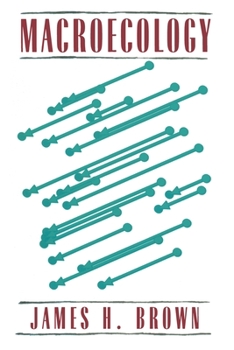Macroecology
Select Format
Select Condition 
Book Overview
In Macroecology, James H. Brown proposes a radical new research agenda designed to broaden the scope of ecology to encompass vast geographical areas and very long time spans. While much ecological research is narrowly focused and experimental, providing detailed information that cannot be used to generalize from one ecological community or time period to another, macroecology draws on data from many disciplines to create a less detailed but much broader picture with greater potential for generalization. Integrating data from ecology, systematics, evolutionary biology, paleobiology, and biogeography to investigate problems that could only be addressed on a much smaller scale by traditional approaches, macroecology provides a richer, more complete understanding of how patterns of life have moved across the earth over time. Brown also demonstrates the advantages of macroecology for conservation, showing how it allows scientists to look beyond endangered species and ecological communities to consider the long history and large geographic scale of human impacts. An important reassessment of the direction of ecology by one of the most influential thinkers in the field, this work will shape future research in ecology and other disciplines. "This approach may well mark a major new turn in the road in the history of ecology, and I find it extremely exciting. The scope of Macroecology is tremendous and the book makes use of its author's exceptionally broad experience and knowledge. An excellent and important book."--Lawrence R. Heaney, Center for Environmental and Evolutionary Biology, the Field Museum
Format:Paperback
Language:English
ISBN:0226076156
ISBN13:9780226076157
Release Date:June 1995
Publisher:University of Chicago Press
Length:284 Pages
Weight:0.90 lbs.
Dimensions:0.6" x 6.1" x 9.0"
Customer Reviews
1 rating
A very good primer
Published by Thriftbooks.com User , 14 years ago
This is the book that launched the macroecological perspective and also reviewed all the information available at the time. I think the major contributions of this volume are the ideas and hypothesis provided by Brown. On the other hand, some of the chapters are overcrowded with examples from North American Birds and Mammals, which reflect the background and experience of the author. For those who are not used to work with these groups of animals this could be a little frustrating, specially because much of the patterns pointed out are explained using morphological traits of these groups. However, if you see these examples as just patterns coming to light, this book could work for you. It's noteworthly that some chapters of this book are very similar to ones found in the Brown and Lomolino's Biogeography book. The reader should also be aware that currently there are at least three journals that only publish articles related to macroecology, besides other regular ecological journals that also dedicate sections to the topic. I recommend the reading, but the reader must be aware that much of what is treated as an unexplained pattern, today it could be also a very straithforward one.






